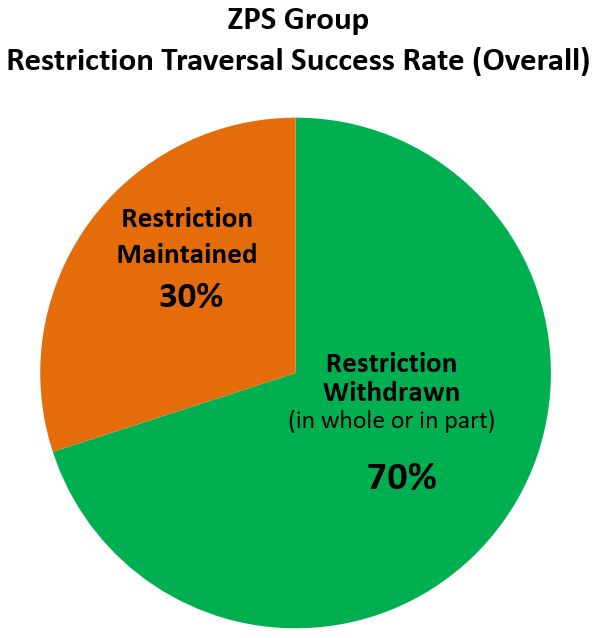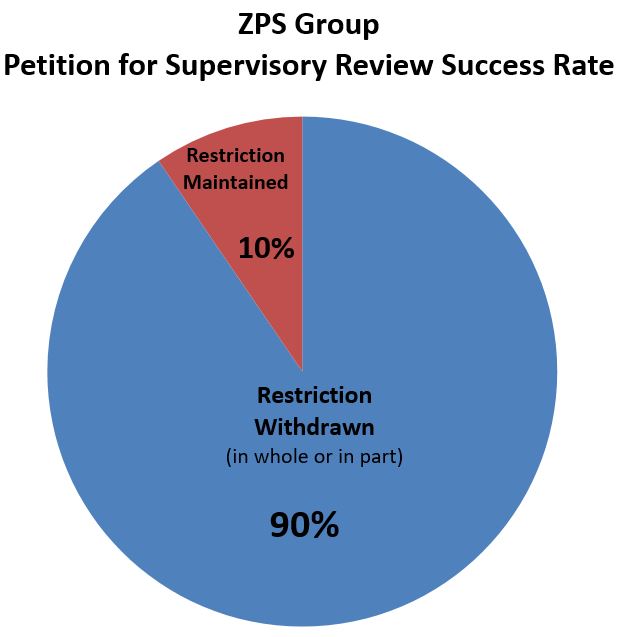RESTRICTION PRACTICE
A Restriction Requirement is issued when a Patent Examiner believes that a Patent Application includes claims directed to more than one invention. Under 37 CFR 1.142(a):
If two or more independent and distinct inventions are claimed in a single application, the examiner in an Office action will require the applicant in the reply to that action to elect an invention to which the claims will be restricted, this official action being called a requirement for restriction (also known as a requirement for division).
In a typical Restriction Requirement, the Examiner will specifically categorize the filed claims as belonging to two or more inventions. As one example, the Examiner may define the application as including claims directed to two inventions: Invention I having claims 1-10 directed to a product and Invention I having claims 11-20 directed to a method of manufacturing. In such an example, the Examiner might allege that the claimed product and process are directed to different inventions on the grounds that either the claimed product can be made by a process materially different from that defined in claims 11-20 or that the claimed process can be used to make a product materially different from the product defined by claims 1-10.
A Response to a Restriction Requirement must include an election one of the identified “inventions” to be examined. However, the patent applicant may also argue that the Restriction Requirement is unnecessary and/or improper, a practice which is referred to as electing an invention “with traverse”. The Examiner will review the submitted arguments and respond to them in a subsequent Office Action. In such case the Examiner will either withdraw the Restriction or make the Restriction “final”. If the later occurs, the patent applicant has the opportunity to file a Petition requesting supervisory review of the restriction requirement. This Petition is reviewed by the Director of the relevant technology group under which the patent application is being examined.
While it is a common prosecution practice to simply concede to the Examiner’s Restriction without any argument (i.e., electing “without traverse”), doing so may result in substantial and unnecessary prosecution costs. In our experience, many Restriction Requirements can be overcome by arguments submitted to the Examiner (or failing that via Petition to the Director) explaining why the filed claims are not actually directed to independent and distinct “inventions”. Assuming these arguments are successful, the practice of traversing Restriction Requirements affords significant cost savings to the patent applicant by eliminating the costs associated with filing, prosecuting, and maintaining one or more Divisional applications directed to the non-elected invention(s).


As shown in the charts above, the ZPS Group has been very successful at traversing Restriction Requirements. We currently have a 70% success rate for traversing Restriction Requirements – meaning some or all withdrawn claims are rejoined in over two-thirds of the 255 cases that we have traversed. The Director has withdrawn Restriction in whole or in part in 90% of the cases that we have elected to file a Petition for Supervisory Review of the Examiner’s Restriction. While each case is unique and results from one case cannot be interpreted as applying in another case, we have found traversing Restriction Requirements and submitting a Petition where appropriate to be a very effective strategy for maintaining multiple sets of originally filed claims in a single application for examination.
